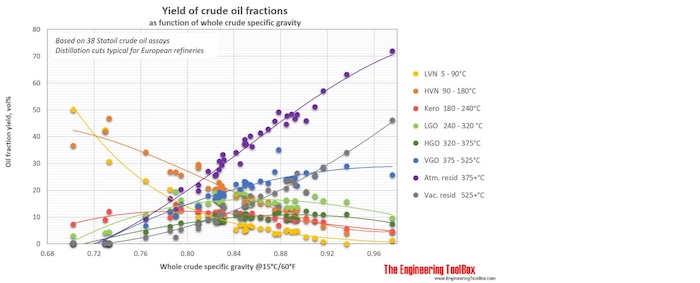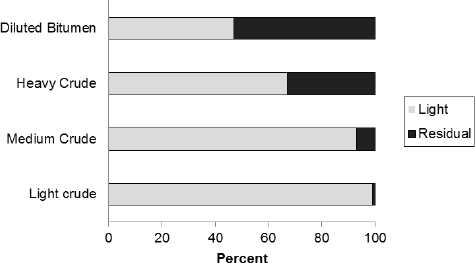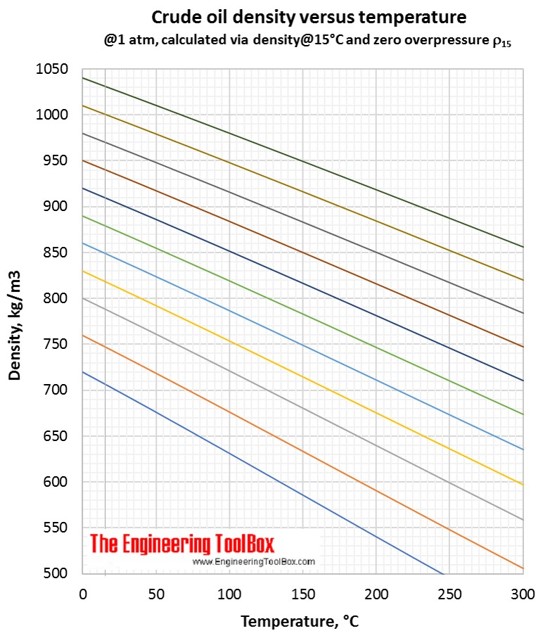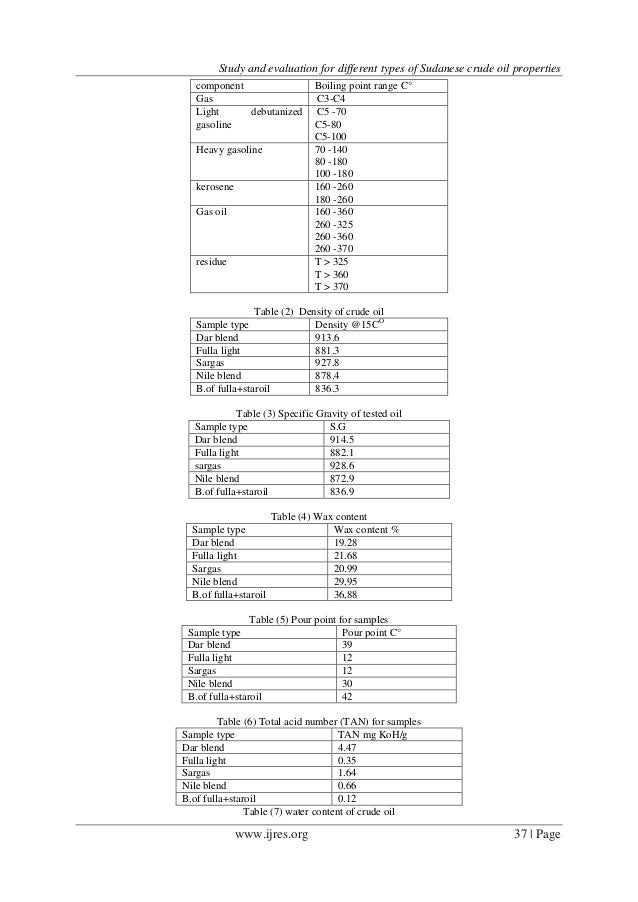Flash Point Of Light Crude Oil
So the flash point of crude oil is variable and is 100 degree fahrenheit. Both temperatures t 10 and flas point t f in kelvin.
 Effects Of Asphaltene Resin And Crude Oil Type On The Interfacial
Effects Of Asphaltene Resin And Crude Oil Type On The Interfacial
Flash point is an important factor in relation to the safety of spill cleanup operations.

Flash point of light crude oil. The flash point is the lowest temperature at which the vapor above the oil sample will momentarily ignite or flash when an ignition source is passed over it. Flammable vapors may travel long distances along the ground before reaching a point of ignition and flashing back. The flash point is a descriptive characteristic that is used to distinguish between flammable fuels such as petrol gasoline in the us and combustible fuels such as diesel.
The flash point of oil is the temperature at which the vapor over the liquid will ignite upon exposure to an ignition source. The flash point is an indication of how easy a chemical may burn. The flash point is defined as the lowest temperature to which lubricants should be heated prior to its gas.
The flash point typically 225 degrees c or 440 degrees f for mineral oils is an indication of the safety hazards of a lubricant with respect to fire and explosion. This is because the oil has flash over point at 140 deg cl and the winding insulation cannot exceed the flash point of the oil. We cannot pin point to any exact flash point temperature of crude oil as the composition and the api gravity of the crude oil varies.
The flash point can be estimated using the following equation. A liquid is considered to be flammable if its flash point is less than 60 c. Fuels which have a flash point less than 37 8 c 100 0 f are called flammable whereas fuels having a flash point above that temperature are called.
Boil over may result in a large expulsion of burning oil from the tank greatly increasing the fire area. Open top tanks involved in a fire have a potential for boil over if water or water in oil emulsion is at the bottom of the tank. The flash point of a chemical substance is the lowest temperature where enough fluid can evaporate to form a combustible concentration of gas.
Materials with higher flash points are less flammable or hazardous than chemicals with lower flash points. It is also used to characterize the fire hazards of fuels. Flash point a flash point indicates how easy a chemical may ignite and burn flash point liquids common liquids and fuels and their flash points fuels and chemicals autoignition temperatures the autoignition point for some common fuels and chemicals butane coke hydrogen petroleum and more.
Where t 10 is normal boiling point for petroleum fractions at 10 vol distillation temperature.
 West Texas Sunrise The Great Outdoors Outdoor Sunrise Sunset
West Texas Sunrise The Great Outdoors Outdoor Sunrise Sunset
 Missing 8 Year Old Noah Mcintosh Honored At Corona Vigil Sign
Missing 8 Year Old Noah Mcintosh Honored At Corona Vigil Sign
 Yield Structure Of Crude Oils With Increasing Density Of Crude
Yield Structure Of Crude Oils With Increasing Density Of Crude
 Goldman Joins Chorus Warning Against Yield Curve Panic Yield
Goldman Joins Chorus Warning Against Yield Curve Panic Yield
 Oil Refinery Diagram Crude Oil Refining Process Crude Oil
Oil Refinery Diagram Crude Oil Refining Process Crude Oil
 2 Chemical And Physical Properties Of Crude Oils Spills Of
2 Chemical And Physical Properties Of Crude Oils Spills Of
 This Is A Paralyzed Market Hedge Fund Turnover Drops To All Time Low
This Is A Paralyzed Market Hedge Fund Turnover Drops To All Time Low
 Cosmetic Self Emulsifying Waxes Include Pharmaceutical Cream
Cosmetic Self Emulsifying Waxes Include Pharmaceutical Cream
 Density Of Crude Oil As Function Of Temperature
Density Of Crude Oil As Function Of Temperature
 Pdf Boiling Point Distribution Of Crude Oils Based On Tbp And
Pdf Boiling Point Distribution Of Crude Oils Based On Tbp And
 10 Biggest Oil Spills In History Oil Spill Big Oil History
10 Biggest Oil Spills In History Oil Spill Big Oil History
 Rimpro Pe Is A Specially Manufactured Product To Emulsify Paraffin
Rimpro Pe Is A Specially Manufactured Product To Emulsify Paraffin
 What Is The Best Crude Oil And Why Are Some Crudes Better Than Others
What Is The Best Crude Oil And Why Are Some Crudes Better Than Others
 Mapa Miejsc Pobytu Uczestnikow Programow Work And Travel Oraz
Mapa Miejsc Pobytu Uczestnikow Programow Work And Travel Oraz
 React With Basis And Alkalis To Produce Salts How To Memorize
React With Basis And Alkalis To Produce Salts How To Memorize
 Iran In Talks With Asia Buyers To Up Oil Sales Oil And Gas News
Iran In Talks With Asia Buyers To Up Oil Sales Oil And Gas News
 Pdf Nile Blend Crude Oil Wax Separation Using Mek Toluene Mixtures
Pdf Nile Blend Crude Oil Wax Separation Using Mek Toluene Mixtures
 Study And Evaluation For Different Types Of Sudanese Crude Oil Proper
Study And Evaluation For Different Types Of Sudanese Crude Oil Proper
 The Surprising Products We Get From Crude Oil Visual Ly
The Surprising Products We Get From Crude Oil Visual Ly